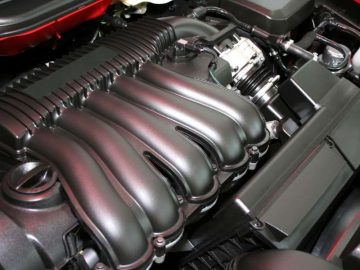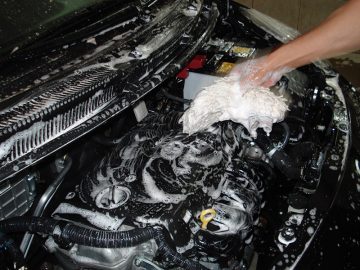Tag: engine
Many car owners are afraid to wash the engine compartment, fearing it will harm electrical equipment, and leave the engine dirty. There are numerous stories of problems appearing after the engine washing. But this happens only due to mistakes made in the process. This article will guide you how to wash the engine at home properly so as not to damage the unit and other equipment. read more
What Detergents Should Be Chosen?
In most cases, the same composition is used as a detergent for the engine, which is intended for contactless washing of the body – a universal alkaline agent in a slightly diluted, concentrated form. This tool does not always wash out all the dirt under the hood, but it can damage paint, rubber, and some polymers including elastic seals in electrical components. That is why it is better to use special tools designed to wash the engine compartment and engine.
For moderately dirty engine compartments that are cleaned relatively regularly, 1-2 times a year, a foam aerosol engine cleaner is best. The active foam adheres even to vertical surfaces, works quickly and is easy to rinse off – even a simple hose with water pressure is enough. Such a product is ideal for regular use, to remove unexpected and not too tenacious dirt (for example, after a road trip), as well as a quick engine wash as part of the pre-sale preparation of the car.
High-Pressure Engine Wash
You should also consider cleaning under high pressure using a compressor, but it’s the most unsafe washing option:
- Before washing, wait until the engine has cooled down, as a sharp cooling of metal parts will not lead to anything good, in addition, detergent chemistry quickly evaporates from a hot engine.
- Washing the engine begins with some preparatory measures: you need to seal all the contacts well, first of all, this applies to the high-voltage coil, high-voltage wires, generator and other electronics.
- Water shouldn’t get into the connectors. Their design protects from moisture penetration, but over time dangerous cavities can form there.
- After that, wipe the surface of the units with a brush. This must be done to thoroughly wash off all the layers of dirt from hard-to-reach places;
- Then proceed to wash off all chemicals with water under pressure;
- After washing, it is necessary to blow all contacts with air using a compressor, and also remove all water from the surfaces.
Thus, following the rules, you can quickly, efficiently and safely wash your car engine.

